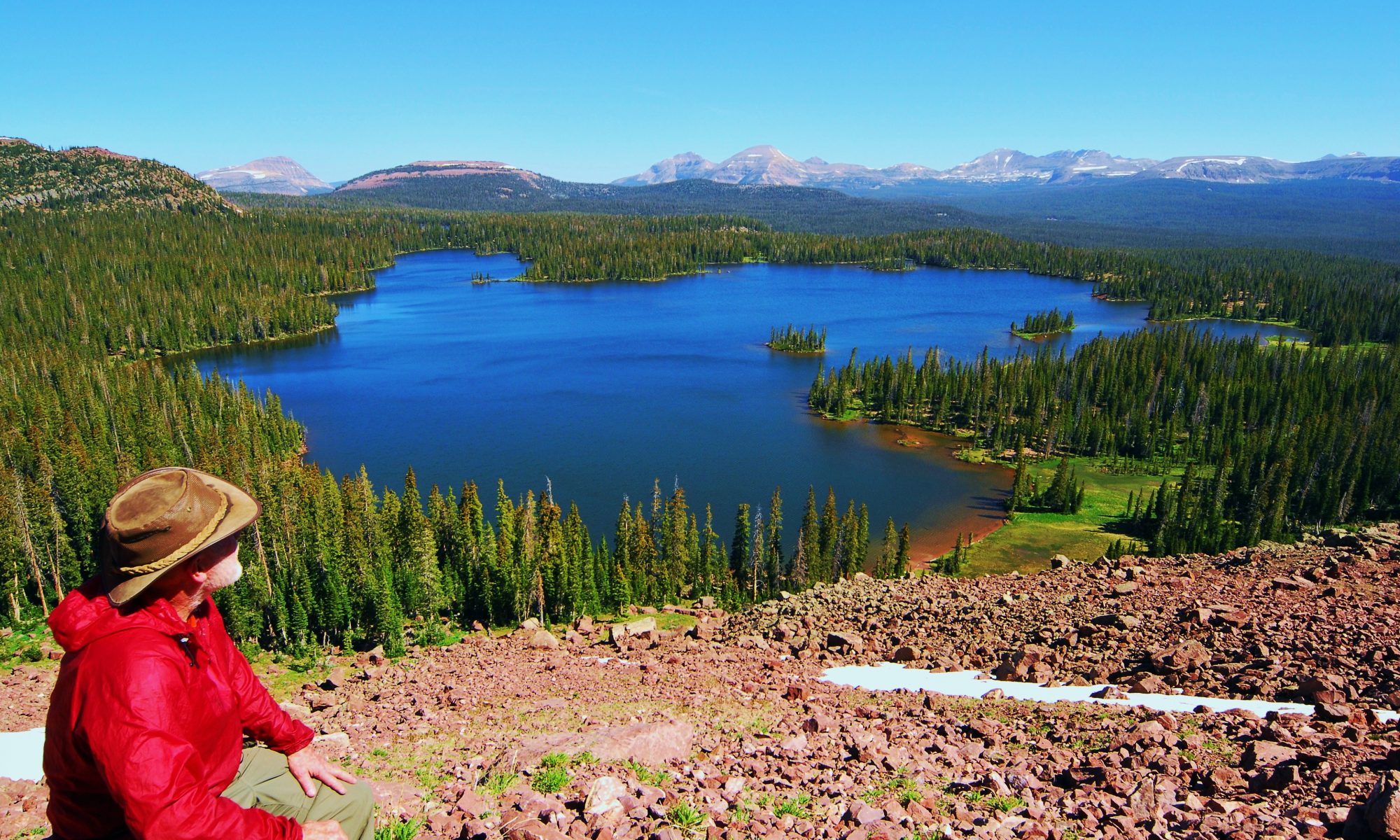Trip No. 4 – Bald Mt-Lk
Trip No. 3 – Bob’s Lake
Trip No. 2 – Grandaddies
This backpack was to the Grandaddy Basin, but to off-trail remote lakes infrequently visited.
Trip No. 1 – Naturalist
This backpack trip was from July 3-6, 2008, first to test my new titanium knee, mentioned in the Challenge–2007 Slide Show, but also to acquire photos of Packard Lake for my good friends, the Ted Packard Family, then to visit the Naturalist Basin (all new areas for me and important in my quest of exploring all the High Uintas). I will try and produce a short slide show for each trip taken during the summer so that there will be some immediate benefit for all interested in our wonderful Uintas.
Challenge–’07 Trips
This slide show is a special version of my “….BACKPACKING 2007” program, but with more emphasis on overcoming obstacles as inspired by two famous historical giants.
Remember, for better quality viewing, contact me for a DVD, and for prints of any photographs in the shows.
1000 Mile Backpack
BACKPACKER MAGAZINE publicity for Uinta Project
My effort to explore, photograph and share the wonderful High Uintas
Wilderness received a bit of publicity in the January 2010 issue of BACKPACKER MAGAZINE.
Click on the photo to view a large image, and read the comments one photo at a time.
LIGHTWEIGHT BACKPACKING & GEAR
For a complete rundown on GEAR and SUPPLEMENTS, click on: GET THE BEST GEAR & SUPPLEMENTS . There you will get links to my recommendations of the best books, equipment and supplements available. In this photo essay, each image has accompanying text in the caption and comments. You will miss much of the text if you view it as a slide show. So click on the first image and then view one at a time reading caption, and then comments. You will see here a 58 year evolution of technique and equipment–from Army surplus gear that saw action against the Japanese in World War II, down to some of the best now available. Links to the options I present so you can get more information to make practical decisions for your needs and interests are only supplied in the GEAR….section and in the article mentioned below.
As the summer backpack season is approaching I have created an article entitled HOW I DO A 3 DAY BACKPACK with up-to-date information and links to all the best equipment available. I will always try and keep it simple and practical. If backpacking requires studying a thick book, something is wrong in my opinion.
SURVIVAL in the High Country
This “article” is rather a photo essay, the text found in the captions and comments. So to get the whole story click on the first image and then view one at a time, reading the captions and comments. The following crucial aspects of survival in high alpine areas, with certain elements applicable to any wilderness experience, are as follows:
1. Lance Armstrong Inspired 27 Day Survival Epic
2. A Kings Peak/Henrys Fork life and death experience–sick, heart attack and the ultimate survival principle.
3. Bears.
4. Hypothermia
5. Life and death survival tools: Satellite phone and SPOT personal satellite tracker.
6. Lightning.
7. High altitude sickeness.–an introduction on the Garfield Basin Trail.
8. My First Survival Experience complicated by High Altitude sickeness.
9. Survival: Weakened by sickness and attacked by High Altitude Sickness–HOW TO GET HELP?
NOTE: Each of these will be added to and completed over the next year or two.
